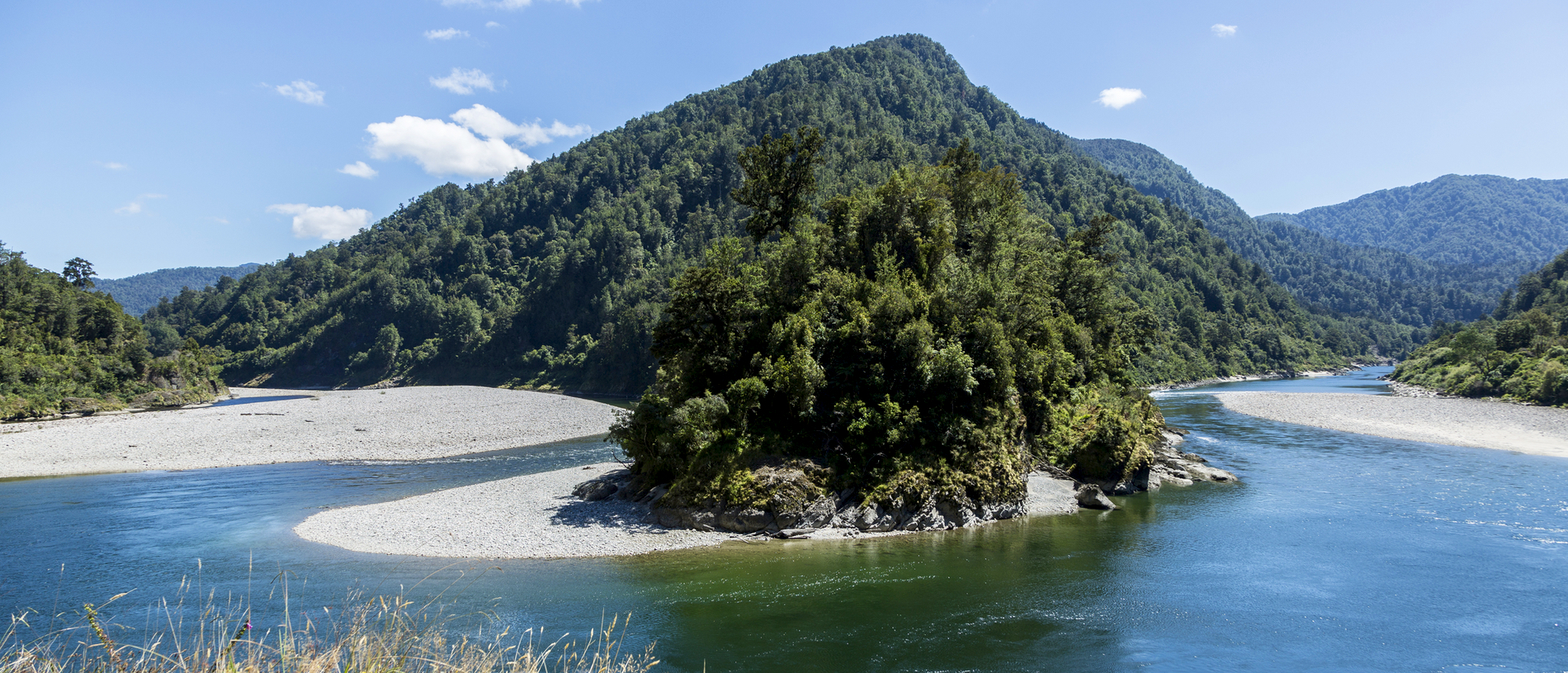
Loved by the locals: Buller
Visit for the famous Pancake Rocks at Punakāiki and stay for river rafting, hot pools, coastal walkways and intrepid mountain biking adventures.

I thought I was going to drown.
Clasping the paddle with my best attempt at a ‘death grip’, I took a deep breath and tried to go to my ‘happy place’.
The raft had folded against a large boulder which was sticking out from the fast flowing Karamea River, and all of us – bar one – were being tipped into the drink. I surfaced next to our guide and just in time to see one of my workmates still sitting in the middle of the raft, wide-eyed and minus his paddle, heading off to face the next, tumultuous section of whitewater on his own.
I couldn’t quite hear what the guide was yelling in the direction of my workmate and the rapidly disappearing raft, but I was pretty sure it would have been something along the lines of ‘Jump!’
It’s been a few years since that adrenaline-filled, ‘team-bonding’ exercise, but the memory has remained vivid in my mind.
To me, it is the epitome of the Buller experience – unforgettable, wild, perhaps a little bit edgy and all situated in a stunningly beautiful, largely untouched environment.
For those who have never visited, the Buller region has a surprisingly varied landscape. From the northern reaches of the snow-touched mountains near Lewis Pass to the rugged tablelands of Paparoa National Park, the huge and mostly untracked wilderness in Kahurangi National Park, and finally the wide sweep of the coastline.
Numerous settlements are dotted throughout this part of the West Coast, many of them testament to the history of coal mining here. The Denniston Plateau is famous for its steeply inclined rail line that was once used to get coal from 600 metres above sea level down to the waiting ships at Westport and is now popular with sightseers and mountain bikers.
The mighty Buller River – at 170km one of the country’s longest – has its source in Lake Rotoiti in the Nelson Lakes National Park.
It carves a long, sometimes languid, sometimes rapid path to the north and then west, rumbling through the spectacular Buller Gorge and finally out to the Tasman Sea near Westport.
There is so much to be inspired by here, whether it is adventuring, sightseeing or just somewhere to get away. And all of it is in a surprisingly mild climate, much drier and warmer than further south, and generally nicer than the television weatherman would lead you to believe.
Westport is the largest population centre, a small feeling town but with all the amenities one would expect, and a great base to travel north or south along the coast, or inland towards the dense, ancient forests, the tussock-ridged hills and the high peaks crowding the horizon.
For me, travelling here is like going back in time to a slower, more relaxed New Zealand, where the landscape still offers up daily hardship and adventures, where a living wage tends to be hard earned, and where visitors are usually welcomed with a smile rather than seen as something to be endured.
Buy a local a beer and you may make a friend for life.
Known by locals as the ‘eighth wonder of the world.’
The self-acting incline was powered by gravity, with a loaded New Zealand Railways Q-wagon of around 12 tonnes plunging down a one in 2.22 descent.
Huge drums were anchored at the top of the incline and mounted together on a common horizontal shaft. Each drum was wound with four-inch thick wire rope in the opposite direction to the next drum. As a full wagon was lowered and wire rope paid out, a second drum, turning in the same direction, wound the second rope on, bringing up an empty wagon.
Late in 1878 construction of the incline began and on 24 October 1879, the Denniston Incline was officially opened.
The incline delivered vast quantities of coal (an average of 14 wagons per hour) from the Denniston Plateau to the Conns Creek railway yards near Waimangaroa for nearly 90 years. It also carried people and goods up and down until other routes in and out were improved.